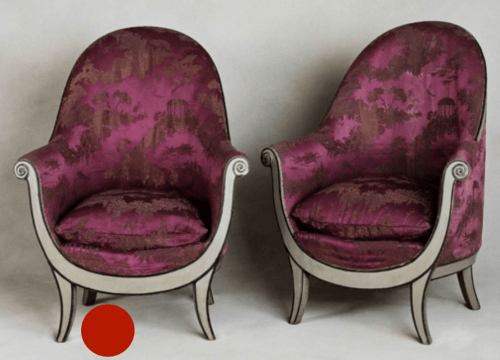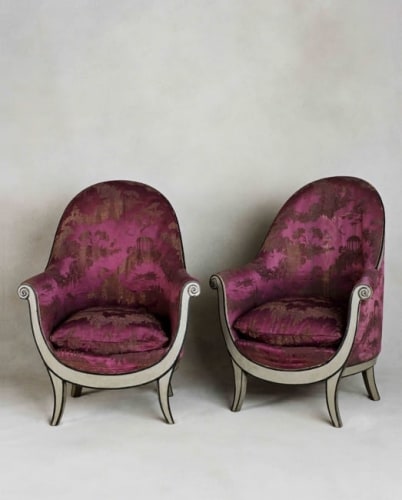

Born in 1884, André Groult was a French decorator and designer who began exhibiting his works at the Salon d'Autumne and at the Artistes Décorateurs in 1910.
Groult moved in a cultivated circle—largely because of his well-connected wife, a fashion designer and sister of the couturier Paul Poiret—that included Louis Süe, André Derain, Marcel Duchamp, Odilon Redon, and Francis Picabia.
After working for La Maison Moderne, Groult formed his own company, where he became well-known for work threading the aesthetics of the Art Nouveau with the Restoration, Louis Philippe, and other more traditional styles of the eighteenth and nineteenth centuries—a reputation that grouped him among a set of prominent designers including Paul Follot, Maurice Dufrene, and Süe & Mare, who considered their work contemporary, but not modern.
Like these others, Groult employed only the finest materials—exotic wood veneers, plush upholsteries, overlays of shagreen or accents in bronze—and assembled them all expertly, and with the utmost taste, in a distinctly natural, curvilinear aesthetic immediately recognizable as his own.
Perhaps his most famous work was displayed at the 1925 Exposition Internationale des Arts Décoratifs et Industriels Modernes, where he created a room for the Ambassade Français. This, his famed Chamber de Madame, a ladies’ bedchamber, was not merely remarkable for its pink and grey soie needlework—he been interested in fine wallpaper since his early professional days—but for the furniture within, all of his own design. Upholstered in galuchat, and assembled in supple, natural curves, as was his custom, it was, nevertheless more modern, more exemplary of the Art Deco. The room earned him an enduring reputation as one of the premier exporents of this signature French aesthetic, one varnished by his work designing furnishings for the first class cabins aboard the SS Normandie.